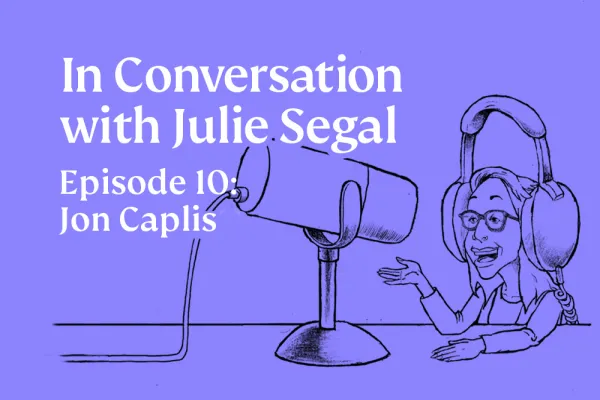One of the most debated finance topics of the last decade has been the long underperformance — until this year — of value funds, which invest in cheap stocks.
If there’s a problem with the strategy, however, it may have more to do with the construction of the most visible value indices, the benchmarks that make headlines and that powerfully imprint a picture of performance on investors’ minds. Both the S&P 500 Value and Russell 1000 Value generally underperformed the broad market in the years between the global financial crisis and 2021.
But Andrew Wellington, CIO of deep value manager Lyrical Asset Management, pointed to a statistic that he said distorts the long history of value outperforming the market and investors’ views of the style.
“Eighty-five percent of the S&P 500 [companies] are in the S&P 500 value index,” Wellington said during an interview with his partner Jeffrey Keswin, CEO, and Keswin’s Labradoodle at their midtown Manhattan offices. “That’s not a value index,” he said, adding that the same is true for the Russell 1000 Value Index: The majority of the companies (859 out of the total) are also constituents of the broader Russell 1000. As of July 19, 446 companies in the S&P 500 are in the value index.
While value investors choose stocks according to a range of characteristics, many look to common financial measures such as low price-to-earnings, low price-to-book, and low price-to-sale ratios. Lyrical’s active strategy, for example, chooses about 30 companies from among the cheapest 20 percent of stocks.
With that in mind, Wellington said that the cheapest quintile — about 200 stocks — returned 19 percent annualized between 2009 and 2017, a period when many investors were questioning whether the strategy still worked. Those returns were 3.7 percent more than the S&P 500 on an annualized basis. The S&P 500 Value returned 13.7 percent annually for the same period. The S&P 500 Value index and the cheapest quintile both hit particularly tough times in 2018. The cheapest quintile, however, hit bottom around late March 2020, while the S&P and Russell indices didn’t bottom and begin to outperform until the end of 2021. It was during this period, in particular, when a buzz about value being dead began to emerge.
Keswin, who started Lyrical in 2008 with Wellington, his college roommate at the University of Pennsylvania, said the major indices don’t reflect the style at all. “If you [called] your average financial advisor and said ‘Hey, what do you think is going on in a value index?’ they probably wouldn’t think [that they’re getting] 85 percent of the total S&P, or that 40 percent of the holdings have a one-year forward PE of more than 20. No, you think you’re getting low PE.”
During the interview, Keswin and Wellington walked through 60 years of data on value, showing that the average up cycle lasts eight years, while down cycles last two. If investors look beyond what the big indices are showing, it’s been no different since 2008, they said.
Jon Caplis, CEO of hedge fund research and data firm PivotalPath, said he has seen firsthand how popular indices in the hedge fund industry have shaped investors’ perceptions, often incorrectly, of the performance of certain strategies over time. He said the same holds true in the long-only world. Caplis, who has also studied the value factor and how it affects hedge fund performance in particular, said that the debate raises issues about how to define value, or any strategy, and how to invest in it.
For example, Caplis said that he decided against using the S&P 500 value index in PivotalPath’s analysis, because it wasn’t even correlated at all with the Fama French value factor, which reflects the thinking of Professors Gene Fama and Ken French, who published pioneering research on the premium in 1992. But Caplis said that the Fama French value factor benchmark (HML) likely confounds investors and advisors because it shorts growth stocks.
“Most people think value is outperforming right now, but if you invested in the S&P value index, you’re kicking yourself,” Caplis said. For him, it goes to a much larger problem in the industry: how labels, disclosure, and benchmarks can confuse investors, whether it’s intentional or not. “You can have a thesis that value will outperform, but [it] depends so much on how you execute that strategy,” he said.
After opening its doors in 2009, Lyrical Asset Management delivered strong results for nine years. The value manager delivered cumulative returns of 440 percent, which was 181 percentage points better than the S&P 500 Value index and 225 percentage points better than the Russell 1000 Value index.
Beginning in 2018, however, the value manager — which avoids businesses and sectors that it feels are too complex or opaque, like banks — had a 21-month period of underperformance. Even though the average earnings expectations for its concentrated portfolio grew by more than 11 percent, the market punished Lyrical’s value stocks with a 28.4 percent price decline.
Still, the portfolio began to perform again in August 2019. Then, after a decline early in the pandemic, Lyrical’s strategy hit bottom and began to outperform again. But not the major indices.
“The problem for us and other value practitioners is that the cheapest stocks were working. They had great returns,” said Wellington, who has been a value manager for 26 years, including as a founding member of Pzena Investment Management. But everybody continued to hate value, he added, because these very visible indices had been underperforming since the global financial crisis. Social media was filled with smart people coming up with theories as to why this time might be different, touting everything from low interest rates making growth stocks more valuable to corporate disruption happening at a faster clip.
The methodologies of the indices require that they include the cheapest half of the market capitalization of the broad market, and that theoretically makes sense. But Wellington and others said that the methodologies hit snags when implemented, and that both indices now essentially include all but the most expensive stocks. (The Russell 1000 is split approximately 50-50 between value and growth based on market capitalization, not company count. In a white paper published last year, Russell noted that, “The value style is not the same as the value factor, despite the confusion of having the same label…the value style is an index construction concept used to split the entire market into two segments, one in which value managers act, and the other in which growth managers act.”)
Hamish Preston, director of U.S. Equities Indices at S&P Dow Jones Indices, said it’s important to understand the objective of the style indices, which is to provide what he calls exhaustive coverage, along with full transparency. That means that all the stocks in the broad index are distributed between value and growth. “Every member of the S&P 500 has a growth or value application,” he said. “It may be 100 percent, it may be 0 percent, [or it may be] anywhere in between.” He added that with all the criticisms, the S&P 500-style indexes have reflected the overall value and growth trends seen by S&P Dow Jones. Through the end of June, the S&P 500 was down 20 percent, but the S&P 500 Value fell only 11.4 percent; value outperformed the growth index by 16 percent. S&P Dow Jones now also offers pure style indices, which are more discerning about the companies that make it into the final growth or value benchmark. The pure style indices are weighted according to each company’s style score, while the others are weighted according to market capitalization. Preston said that the pure style iteration of the indices “reflect[s] the next step in how people are looking at style.”
In the end, Lyrical’s co-founders decided to build an alternative index and an exchange-traded fund to track it. (No, it’s not getting into the index business.) What it now calls its active strategy continues to invest in roughly 30 stocks, while the ETF holds the cheapest quintile.
“We saw a problem with the indices, and that people were [shying away from] value investing because of the indices primarily,” said Keswin in a follow-up call. “We said let’s do something about it. All of this will be as biased as that sounds, but I think it was based on this objective observation about the frailties in the system that we can rightly opine about.”







